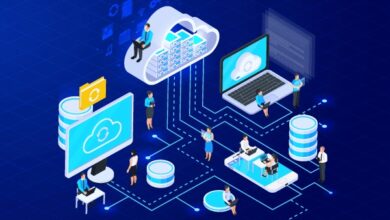
In the world of logistics, customer portals have become a game-changer, offering businesses and their clients a centralized platform to streamline operations, enhance communication, and improve overall efficiency.
These online portals have redefined the way logistics companies interact with their customers. Apart from streamlining order processing and helping companies generate data-driven insights, they make part of supply chain visibility – an important aspect of supply chain resilience that is still overlooked by 72% of suppliers.
In this blog post, we will explore the six essential components of logistics customer portals that are reshaping the logistics industry and transforming customer experiences.
#1 Dashboard
A well-designed logistics customer portal begins with a user-friendly dashboard. The dashboard serves as the control center, providing a comprehensive overview of essential logistics data and performance metrics. It offers a snapshot of ongoing shipments, pending orders, delivery status, and other critical information at a glance. A customizable dashboard empowers customers to tailor the view according to their preferences, ensuring easy access to the most relevant data for their specific needs.
A robust dashboard allows logistics managers to monitor key performance indicators (KPIs) in real time, enabling them to identify potential bottlenecks and make informed decisions promptly. For customers, the dashboard offers insights into their logistics operations, giving them greater control over their supply chain and fostering transparency in the entire process.
#2 Real-time Shipment Tracking
Real-time shipment tracking is a fundamental feature of logistics customer portals. It enables customers to track their shipments in real time from pickup to delivery. With integrated GPS technology and up-to-date data, customers gain complete visibility into their shipments’ current location and estimated time of arrival. This transparency enhances customer satisfaction, builds trust, and facilitates proactive decision-making for both logistics companies and their clients.
The ability to track shipments in real time minimizes the risk of delays and allows customers to anticipate and respond to potential disruptions. It also provides customers with the flexibility to plan their inventory management and distribution more effectively, improving their overall supply chain efficiency.
#3 Online Order Creation
The ability to create and manage orders online is a crucial component of logistics customer portals. Gone are the days of manual order processing; modern logistics portals empower customers to create and submit orders with just a few clicks. This streamlines the order-to-fulfillment process, reducing errors and manual intervention. Moreover, customers can easily access order history, invoices, and other documentation through the portal, simplifying the entire logistics management journey.
Online order creation significantly speeds up the order processing cycle, allowing logistics companies to handle a higher volume of orders efficiently. This efficiency leads to improved customer satisfaction, as customers can place and track their orders seamlessly, fostering long-term partnerships with logistics providers.
#4 Manager Communication Support
Effective communication between customers and logistics managers is vital for successful logistics operations. Customer portals with built-in communication support facilitate seamless interactions, allowing customers to raise inquiries, seek assistance, and receive timely updates from their dedicated managers. This real-time collaboration enhances efficiency, minimizes delays, and fosters stronger business relationships.
Manager communication support ensures that logistics managers are responsive to customer inquiries and concerns, addressing issues promptly and professionally. The portal serves as a centralized hub for communication, eliminating the need for customers to use multiple channels to get in touch with the logistics team. Enhanced communication leads to increased customer satisfaction and loyalty, as customers feel valued and informed throughout the logistics process.
#5 Reporting and Analytics
Data-driven decision-making is the cornerstone of modern logistics management. A robust customer portal provides comprehensive reporting and analytics capabilities, offering valuable insights into key performance indicators, supply chain trends, and customer behavior. Logistics companies can leverage these analytics to optimize processes, identify areas for improvement, and proactively address potential issues, resulting in a more agile and competitive logistics ecosystem.
Advanced reporting and analytics enable logistics managers to assess the efficiency of their operations, identify patterns, and forecast future demand. With these insights, logistics companies can make data-backed decisions, such as adjusting routes, optimizing inventory levels, and enhancing overall supply chain performance. For customers, reporting and analytics provide valuable information on order history, delivery performance, and shipping costs, enabling them to optimize their logistics strategies and drive cost savings.
#6 Documentation Management
Logistics operations involve extensive documentation, ranging from invoices and shipping labels to customs forms and compliance certificates. A well-organized documentation management system within the customer portal simplifies record-keeping and retrieval. Customers can securely access and download essential documents, eliminating the need for manual paperwork and ensuring compliance with regulatory requirements.
With a centralized repository for all documentation, logistics companies can enhance their record-keeping, reducing the risk of misplaced or lost documents. This improves overall efficiency in handling paperwork, streamlining customs clearance and compliance processes. Additionally, the convenience of accessing documents online eliminates the need for physical storage, making the logistics process more environmentally friendly.
To Sum Up
The advent of logistics customer portals has reshaped the logistics industry, elevating customer experiences to new heights. The six essential components discussed in this blog post, including the user-friendly dashboard, real-time shipment tracking, online order creation, manager communication support, reporting and analytics, and documentation management, empower both logistics companies and their clients with unparalleled efficiency and transparency.
By harnessing the power of technology through customer portals, logistics companies can foster stronger partnerships, optimize their supply chains, and stay ahead in a highly competitive market. Embracing these essential components paves the way for a future of logistics where seamless collaboration, data-driven insights, and customer-centricity redefine the landscape of success.




